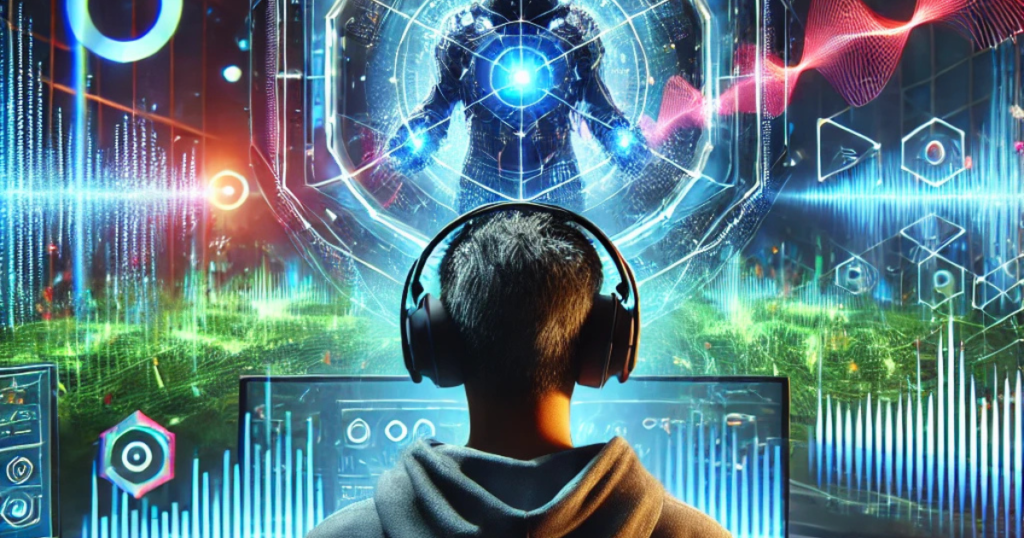Gaming harmonicode is emerging as a groundbreaking innovation in the gaming industry, blending advanced coding techniques with dynamic audio engineering. As games become more immersive and interactive, the demand for innovative soundscapes has risen. Gaming harmonicode stands at the intersection of technology and creativity, redefining how players experience virtual worlds.
In this article, we will delve into the significance of gaming harmonicode, explore the latest trends and innovations shaping its growth, and address the challenges developers face. By understanding these elements, we can better appreciate how this technology is transforming the gaming landscape.
What is Gaming Harmonicode?
The Basics of Harmonicode
Gaming harmonicode is a unique fusion of programming and sound design, enabling developers to create dynamic audio experiences. This technology uses algorithms to generate, adapt, and synchronize audio with gameplay in real time. Unlike traditional soundtracks, harmonicode-based audio evolves with player actions, enhancing immersion and realism.
Through gaming harmonicode, developers can craft soundscapes that respond to variables such as in-game environments, player interactions, and narrative developments. This creates an adaptive and engaging audio experience, making it a cornerstone of modern gaming innovation.
Historical Background
The concept of harmonicode traces its roots to early experiments with procedural sound generation in the 1990s. Games like Myst and Diablo showcased the potential of dynamic soundscapes, paving the way for harmonicode technologies. Over the years, advancements in coding languages and sound engineering have refined this concept, leading to its widespread adoption in the gaming industry today.
Why Gaming Harmonicode Matters
Enhancing Immersion in Games
Immersion is a critical aspect of gaming, and harmonicode excels in creating deeply engaging experiences. By enabling audio to react dynamically to gameplay, harmonicode ensures that players feel connected to the virtual world. For instance, a subtle change in background music when entering a mysterious cave or an intensifying beat during combat enhances emotional engagement.
Popular titles like The Last of Us and Red Dead Redemption 2 effectively utilize adaptive soundscapes, showcasing how gaming harmonicode can elevate storytelling and gameplay to new heights.
Bridging Creativity and Technology
Gaming harmonicode serves as a bridge between artistic expression and technical innovation. It allows developers to seamlessly blend musical creativity with programming precision. This synergy not only benefits players, who enjoy richer soundscapes, but also empowers developers to push the boundaries of what’s possible in audio design.
By integrating tools like middleware audio engines and AI-based sound platforms, developers can create unique experiences that stand out in a competitive market.
Current Trends in Gaming Harmonicode
Procedural Audio Generation
Procedural audio generation is a leading trend in gaming harmonicode, enabling developers to create soundscapes that evolve based on player actions. This approach eliminates the need for pre-recorded tracks, offering infinite variations that adapt to gameplay.
For example, No Man’s Sky uses procedural soundscapes to complement its procedurally generated worlds, ensuring that each player’s experience feels distinct and immersive.
AI-Driven Sound Design
Artificial intelligence is revolutionizing gaming harmonicode by automating complex sound design processes. AI tools can analyze gameplay patterns, predict player behavior, and generate adaptive audio on the fly. This not only saves development time but also enhances the quality of soundscapes.
Titles like Hellblade: Senua’s Sacrifice leverage AI-driven harmonicode to create realistic and emotionally resonant sound effects, making it a game-changer for the industry.
Integration of 3D Audio Technology
The rise of 3D audio technology has significantly influenced gamings harmonicode. By simulating spatial audio, developers can create lifelike soundscapes that immerse players in their virtual environments.
This technology is especially impactful in VR and AR gaming, where spatial audio enhances the sense of presence. Games like Resident Evil Village and Half-Life: Alyx demonstrate the potential of 3D audio in creating spine-chilling and immersive experiences.
Innovations Driving Gaming Harmonicode
Adaptive Soundscapes
Adaptive soundscapes represent a significant innovation in gaming harmonicode. These systems analyze real-time gameplay data to adjust audio dynamically. For example, background music may shift from serene to suspenseful as a player approaches a hidden enemy.
This real-time adaptability enhances immersion and ensures that players remain emotionally invested in the game.
Cross-Platform Compatibility
With the growing popularity of gaming across multiple platforms, developers are focusing on creating harmonicode systems that work seamlessly across devices. Middleware tools like Wwise and FMOD have made it easier to integrate dynamic audio across consoles, PCs, and mobile platforms.
Cross-platform compatibility ensures consistent audio quality and user experience, regardless of the device used.
Blockchain and NFTs in Audio Assets
Blockchain technology is emerging as a tool for securing and monetizing gamings harmonicode assets. By tokenizing audio files as NFTs, developers can create unique, tradeable sound assets. This opens new revenue streams while ensuring that creators retain ownership of their work.
While still in its infancy, this innovation has the potential to revolutionize the way sound assets are managed in the gaming industry.
Also Read: Lync Conf Mods
Challenges in the Future of Gaming Harmonicode
Complexity in Implementation
One of the primary challenges of gaming harmonicode is its complexity. Developing dynamic audio systems requires specialized skills in both coding and sound design, making it a resource-intensive process.
To address this, many developers are turning to pre-built tools and frameworks, which simplify implementation without sacrificing creativity.
Balancing Creativity with Technical Constraints
Harmonicode allows for immense creative freedom, but developers often face technical constraints that limit their vision. These constraints may include hardware limitations, budget restrictions, or the need to optimize performance for older devices.
Finding a balance between artistic ambition and practical feasibility remains a constant challenge in the field.
Accessibility Concerns
As gaming harmonicode evolves, ensuring accessibility for all players becomes increasingly important. High-quality audio systems and advanced hardware may not be accessible to all users, creating a potential barrier to entry.
Developers must consider these factors to create inclusive experiences that cater to a diverse audience.
Case Studies: Gaming Harmonicode in Action
Popular Games Leading the Way
Several games have set benchmarks for gaming harmonicode by showcasing its potential. For example, The Witcher 3: Wild Hunt uses adaptive soundscapes to enhance its storytelling, while Journey integrates dynamic music to create an emotional narrative.
These examples highlight how gaming harmonicode can elevate gameplay and player engagement.
Developer Insights
Developers working with harmonicode often share insights into its transformative potential. Many emphasize the importance of collaboration between sound designers, programmers, and artists to achieve cohesive results.
Their experiences underscore the value of harmonicode in pushing the boundaries of game design.
The Future of Gaming Harmonicode
Emerging Technologies
As technologies like quantum computing and AI continue to advance, the future of gaming harmonicode looks promising. These innovations will enable faster processing, more realistic soundscapes, and greater customization.
Emerging tools and platforms will also make harmonicode more accessible to indie developers, fostering creativity across the industry.
Evolving Player Expectations
Player expectations for immersive experiences are driving the evolution of gaming harmonicode. Gamers increasingly demand lifelike soundscapes that enhance their emotional connection to games.
By staying attuned to these expectations, developers can continue to innovate and deliver memorable experiences.
Conclusion
Gaming harmonicode is transforming the gaming industry by merging technology with artistry to create immersive soundscapes. From adaptive sound systems to AI-driven design, its potential is vast. However, challenges such as implementation complexity and accessibility must be addressed to ensure its continued growth.
As technologies evolve and player expectations rise, gaming harmonicode will remain at the forefront of innovation. By embracing this powerful tool, developers can craft experiences that captivate players and push the boundaries of what games can achieve.

